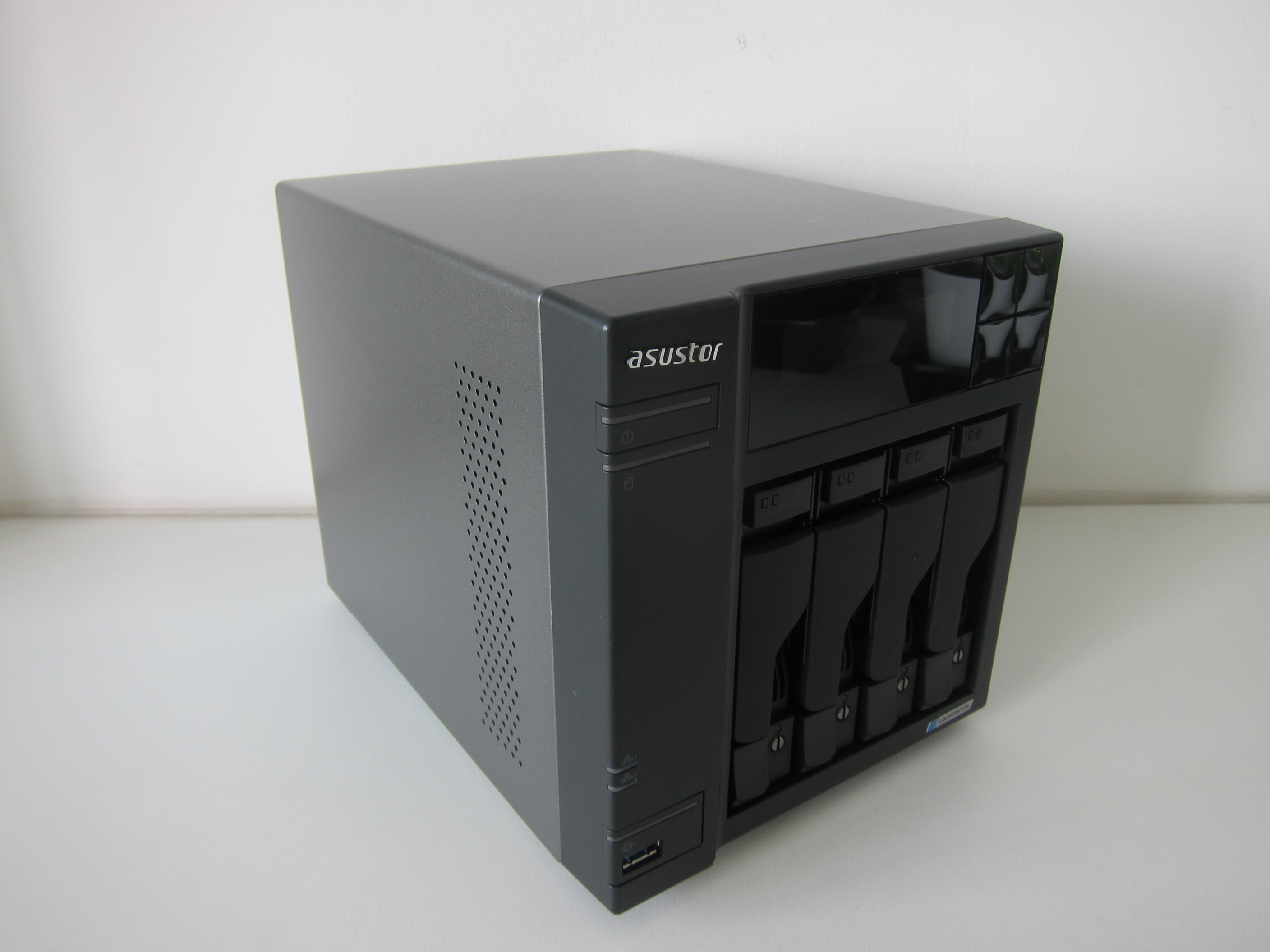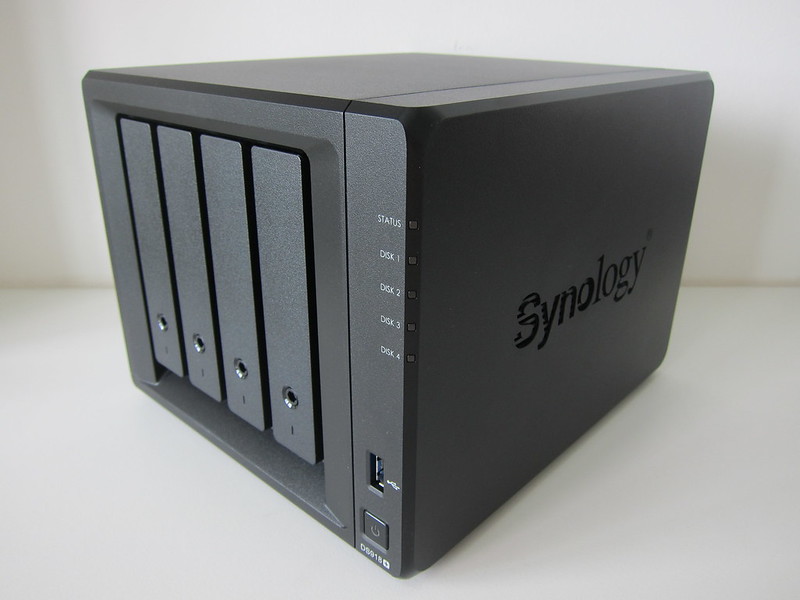Synology BeeStation Plus 8TB Review
Synology BeeStation is a user-friendly alternative to services like iCloud, Google Photos, and Google Drive, aimed at everyday consumers rather than IT professionals or DIY enthusiasts. It comes with a preinstalled hard drive and preconfigured settings, providing an out-of-the-box experience that lets users start uploading files and backing up photos immediately.
I would consider the Synology BeeStation a consumer Network Attached Storage (NAS) targeted at first-time consumers who want to get a feel of NAS and how it fits into their daily workflow.
Synology DiskStation, on the other hand, is a prosumer NAS targeted at slightly more advanced users who want to go beyond storing and retrieving files.
I followed a similar journey. I started with a consumer NAS D-Link DNS-323 in 2008 and later moved on to Synology DiskStation DS210j in 2010.
The Synology BeeStation product line includes the Synology BeeStation and Synology BeeStation Plus.
BeeStation is geared towards individual users like hobbyist photographers, life loggers, new parents, and fresh graduates. These users typically transition from portable drives to basic cloud storage services like iCloud or Google Photos.
BeeStation Plus, on the other hand, targets households and professionals, such as families, movie collectors, freelancers, and SOHO (Small Office/Home Office) workers. It replaces more complex setups like cloud family sharing, professional cloud storage services (Google Drive, OneDrive, Dropbox), and external media servers.
Because of that, BeeStation Plus has higher specifications, a better processor, more RAM, and higher hard disk capacity.
Here is a table of both specifications.
| Product | BeeStation Plus | BeeStation |
|---|---|---|
| Capacity | 8TB (Synology HAT3310, 7200 RPM) | 4TB (Synology HAT3300, 5400 RPM) |
| Processor | Intel Celeron J4125 | Realtek RTD1619B |
| Memory | 4 GB DDR4 | 1 GB DDR4 |
| Ethernet port | 1 x 1 GbE RJ-45 | |
| USB Ports | 1x USB-A 3.2 Gen 1, 1x USB-C 3.2 Gen 1 | |
| Drive Bay | 1 | |
| System Fan | Yes | No |
| Power | 14.75 W (Access), 2.83 W (HDD Hibernation) | 7.85 W (Access), 1.65 W (HDD Hibernation) |
| Dimensions | 148.0 x 62.6 x 196.3 mm | 148.0 × 62.6 × 196.3 mm |
| Weight | 1.2 kg | 820 g |
In Singapore, Synology BeeStation retails for around S$399 while Synology BeeStation Plus retails for around S$779. You can get them on Synology Official Store in Shopee.
Unboxing



Inside the box, you’ll find:
- BeeStation Plus 8TB
- AC Power Adapter
- 1m Cat 5e Ethernet Cable
- Quick Start Guide

Design
Like most consumer NAS, the overall enclosure is made of plastic. Only one color is available for BeeStation; the official color name is Graphite Silver.

There is only one hard drive inside the enclosure; hence, it is lightweight at 1.2kg.


In front, there is only a status LED indicator.

All the buttons and ports are on the back (from top to bottom):
- Power Button
- Reset Button
- USB-A 3.2 Gen 1 Port
- USB-C 3.2 Gen 1 Port
- GbE RJ-45 Port
- Power Port

Setup
You do not need an app to set up BeeStation, but you need a Synology Account for the setup.
Start by scanning the QR code provided in the Quick Start Guide, and it will bring you to portal.bee.synology.com/setup. It will also automatically fill in your BeeStation serial number, so you don’t need to type it manually.
After powering up the device and plugging the Ethernet cable into it, you can visit and follow the on-screen instructions.

You will need access to the BeeStation, as you need to press and hold the power button at the back for four seconds.

It takes about 5 minutes to get it up and running. But you will need another 15 minutes for it to install the updates.

Once it is up and running, you can download the BeeFiles and BeePhoto apps to help you manage your files and photos on your BeeStation.

Using It – BeeFiles
There are multiple ways you can access your files inside the BeeStation. One is using your browser, and go to portal.bee.synology.com and choose BeeFiles. It will open a new tab with the BeeFiles interface, where you can drag and drop folders and files directly via the browser window.

You can also use the BeeStation Desktop app for your macOS or Windows to upload folders and files directly via the operating system’s native Finder or File Explorer.


If you wish to keep specific folders in sync from your computer to BeeStation, you can also do that in the BeeStation Desktop app.

Lastly, you can upload files directly using the BeeFiles iOS or Android app.

The features available are similar across all platforms, including generating a shareable file link to the files stored in your BeeStation with a password and expiration date.

One feature that I found exclusive to the browser is the ability to connect to cloud providers and have BeeStation sync the files so that your BeeStation will also have a copy of those files.

Three cloud providers are supported: Dropbox, Google, and Microsoft.

Using It – BeePhotos
For BeePhotos, you can back up photos from Apple iCloud or Google Photos using either the BeeStation Desktop app or browser.

Using the BeePhotos iOS app, you can back up directly from your photo library.
The first backup will take a very long time. I recommend leaving it to charge while backing up, so iOS will allow the BeePhotos app to run in the background. Once the first backup is done, I recommend changing the option to “Backup new photos only”.

Photos in BeePhotos can be accessed only via the app and browser.

The BeeStation Desktop app doesn’t have the option to view your photos, only to upload them.

I love the iOS app backup feature. It works perfectly, so much better than Google Photos. I have backed up my whole iPhone photo library of about 25,600 photos. During the entire process, I went for dinner and returned; my BeeStation Internet was disrupted a few times as I tidied up the Ethernet cable. Despite all these connection issues, the whole process went on smoothly.

BeePhotos support AI-driven automatic organization featuring facial recognition, subject detection, and geotagging—all processed entirely on-device, with no data uploaded to the cloud.
It’s a hit and miss for me. When searching for tables, it works fine.

When searching for a table lamp, there are more unrelated results.

The model needs improvement as it is not as good as Apple’s. But it should not be an issue, as software updates can fix it.
Plex Media Server Integration
The BeeStation Plus includes built-in Plex Media Server support, allowing you to stream movies and TV shows to Plex devices.

Note that premium Plex features like Remote Streaming, Hardware Transcoding, Downloads, Skip Intro & Credits still require a separate Plex Pass subscription.
I bought the lifetime Plex Pass subscription many years back, as Plex is my main app for watching downloaded movies and TV shows on Apple TV.
I am not using this integration because all my movies and TV shows are already in my Synology DiskStation DS920+, and 8TB is not enough for all of them.
Single Drive Configuration
When I first heard of BeeStation, I noticed that there is only a single hard drive in the device itself, so you cannot run RAID, and if the hard drive fails, all your data is gone.
By right, you are not supposed to use RAID as a backup, and I think many people have this misconception that RAID is a backup (including me).
I learned it the hard way when my newer Synology DiskStation (can’t remember the model), for some reason, failed, and there is no way for me to recover the data I have in the NAS. So having RAID is useless there.
Luckily, I have an offline backup in my older Synology DiskStation DS210j.
So remember, RAID is not a backup. It is for the availability of your data. There is still a single point of failure if the device is down. Off-site or offline backups are still needed.

Cost Analysis
BeeStation is being marketed as a private cloud alternative without a recurring subscription.
Looking at the recurring cost of various cloud providers, you will break even after a year.
- BeeStation Plus 8TB: S$699 (one-time)
- Apple iCloud+ 6TB: S$42.98/month
- Google One 10TB: S$69.98/month
- Dropbox Plus 3TB: S$26/month
- Microsoft 365 Personal 1TB: S$15.49/month
Of course, this excludes the cost for off-site or offline backups, whether you are on BeeStation or cloud providers.
BeeProtect – Backing Up Your BeeStation
This is where Synology monetizesmonetiz from you by providing you with a paid solution to back up your BeeStation. It is called BeeProtect.
BeeStation 4TB costs US$59.99 (S$73) yearly, and BeeStation Plus 8TB costs US$119.99 (S$155) yearly.
Your BeeStation comes with a three-month free subscription to BeeProtect.
Again, this is optional; you can back up to your external hard drive as well.

Conclusion
The Synology BeeStation Plus 8TB bridges the gap between complex NAS devices and simple cloud subscriptions.
My only complaint is still the lack of RAID. Yes, I know that RAID is not meant for backup. However, data availability decreases without RAID compared to a NAS with two hard drives.
There is only one integration available on BeeStation Plus; I hope to see more integrations in the future.
For S$699, you are buying 1 year of cloud storage upfront, with the added benefits of local control and privacy.
Overall, the BeeStation Plus makes most sense for users currently paying for multiple cloud storage subscriptions or those prioritizing data privacy.




